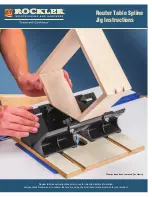
GB
- 22 -
4. Technical data
See warranty card of your country.
5. Before starting the equipment
Before you connect the equipment to the mains
supply make sure that the data on the rating plate
are identical to the mains data.
6. Operation
Important!
After you use the equipment for the
fi
rst time,
some smoke may escape from it. This is normal.
6.1 3-setting ON/OFF switch (Figure 3)
Select the required working temperature and air
volume with the ON/OFF switch (2).
Within a very short space of time the hot air gun
will reach operating temperature.
Switch position 1: 230 V ~ 50 Hz
1. Setting – 350°C / 300 liters/min.
Center position:
Equipment is switched o
ff
.
Switch position 2: 230 V ~ 50 Hz
2. Setting – 550°C / 500 liters/min.
6.2 Possible uses for the hot air pistol:
•
Removal of paint and lacquer.
•
Attention! Hazardous or poisonous gasses
may be produced while removing paint or lac-
quer. Be sure to provide adequate ventilation.
•
Removal of stickers and decorations.
•
Loosening of rusted or tightly fastened nuts
and metal screws.
•
Thawing of frozen pipes, door locks, etc.
Attention: no not attempt to thaw plastic or
synthetic pipes.
•
Accentuation of natural wood grains before
staining or lacqueing.
•
Shrinkage of PVC packaging foils and insula-
tion tubes.
•
Waxing and de-waxing of skis.
•
Caution: Intensive heating means a higher
risk of fire and explosion! Ensure good venti-
lation. Harmful and/or toxic gases and vapors
may be emitted.
6.3 Selecting the right nozzle
•
The heat nozzle (4) is designed to protect e.g.
glass panes from overheating by diverting the
hot air. For removing paint.
•
The wide nozzle (5) provides uniform air dis-
tribution on small surfaces
•
The reducer nozzle (6) provides a targeted jet
of heat for corners and for soldering work.
•
The reflector nozzle (7) is designed for solde-
ring and shaping tubes, for defrosting water
pipes and for shrinking insulating hoses.
6.4. Thermal protection
In case of overheating, the function of the device
is interrupted by a thermal protection switch. Wait
until the unit has cooled down to start up again
7. Replacing the power cable
Danger!
If the power cable for this equipment is damaged,
it must be replaced by the manufacturer or its
authorized after-sales service or similarly trained
personnel to avoid danger.
8. Cleaning, maintenance and
ordering of spare parts
Danger!
Always pull out the mains power plug before star-
ting any cleaning work.
8.1 Cleaning
•
Keep all safety devices, air vents and the
motor housing free of dirt and dust as far as
possible. Wipe the equipment with a clean
cloth or blow it with compressed air at low
pressure.
•
We recommend that you clean the device
immediately each time you have finished
using it.
•
Clean the equipment regularly with a moist
cloth and some soft soap. Do not use
cleaning agents or solvents; these could at-
tack the plastic parts of the equipment. Ensu-
re that no water can seep into the device. The
ingress of water into an electric tool increases
the risk of an electric shock.
Anl_SA_TH_HA_2000_1_SPK8.indb 22
Anl_SA_TH_HA_2000_1_SPK8.indb 22
08.05.2018 14:06:57
08.05.2018 14:06:57
Содержание TH-HA 2000/1
Страница 17: ...E 17 Anl_SA_TH_HA_2000_1_SPK8 indb 17 Anl_SA_TH_HA_2000_1_SPK8 indb 17 08 05 2018 14 06 57 08 05 2018 14 06 57...
Страница 24: ...GB 24 Anl_SA_TH_HA_2000_1_SPK8 indb 24 Anl_SA_TH_HA_2000_1_SPK8 indb 24 08 05 2018 14 06 57 08 05 2018 14 06 57...
Страница 38: ...38 Anl_SA_TH_HA_2000_1_SPK8 indb 38 Anl_SA_TH_HA_2000_1_SPK8 indb 38 08 05 2018 14 06 57 08 05 2018 14 06 57...
Страница 39: ...39 Anl_SA_TH_HA_2000_1_SPK8 indb 39 Anl_SA_TH_HA_2000_1_SPK8 indb 39 08 05 2018 14 06 57 08 05 2018 14 06 57...
















































